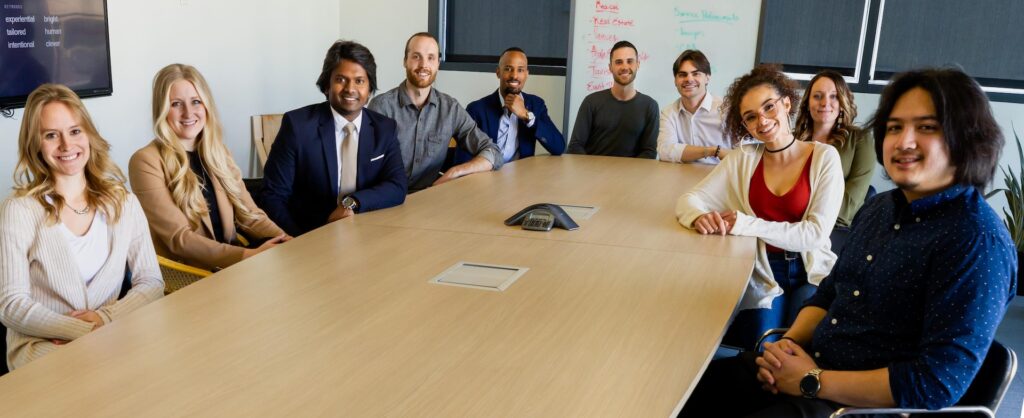
Small businesses operating in today’s highly competitive business landscape often encounter substantial obstacles when it comes to effectively marketing their products and services. With limited resources, tight budgets, and a lack of in-house marketing expertise, they face significant challenges in developing and executing successful marketing strategies. These obstacles can hinder their growth potential and prevent them from effectively reaching their target audience.
Amidst these challenges, small businesses can overcome barriers and access top-tier marketing guidance by hiring a fractional CMO. This experienced marketing professional works on a part-time or project basis, offering strategic insights, guidance, and execution expertise.
Unlike a full-time CMO, a fractional CMO allows small businesses to access the expertise of an experienced marketing leader without the high costs. This arrangement grants them high-level marketing knowledge, strategic thinking, and industry insights that drive growth and enhance their competitive position.
Engaging a fractional CMO allows small businesses to access valuable experience and specialized skills not found internally. This external expertise helps navigate marketing challenges, identify opportunities, and develop targeted strategies aligned with their goals.
In the following sections, we’ll explore the benefits of having a fractional CMO for small businesses. From cost-effectiveness to fresh perspectives and scalability, this arrangement has diverse advantages that transform marketing efforts. Let’s delve into the details and discover how a fractional CMO maximizes small businesses’ marketing potential.
Cost-Effectiveness
One of the primary benefits of a fractional CMO for small businesses is cost-effectiveness. Hiring a full-time CMO may be financially out of reach for many small businesses, but a fractional CMO offers a flexible and affordable solution. With a fractional CMO, small businesses only pay for the services they need, providing access to expert marketing guidance without the burden of a full-time executive salary and benefits package.
Expertise at Your Fingertips
Fractional CMOs bring a wealth of experience and expertise to the table. These highly skilled professionals have worked across various industries, mastering marketing principles and best practices. Engaging a fractional CMO grants small businesses access to seasoned professionals who understand their unique challenges. This expertise empowers them to develop comprehensive marketing plans, identify growth opportunities, and execute tailored strategies for their goals and target audience.
Fresh Perspectives and Innovative Strategies
Small businesses often struggle to break free from stagnant marketing approaches. A fractional CMO injects fresh perspectives and innovative strategies into the mix. These marketing experts provide an outside viewpoint, introducing new ideas, industry insights, and emerging trends that can revitalize a small business’s marketing efforts. With a fractional CMO, small businesses can stay ahead of the curve, adapt to changing market dynamics, and gain a competitive edge.
Scalability and Flexibility
As small businesses grow and evolve, their marketing needs change. Fractional CMOs offer scalability and flexibility to accommodate these shifting requirements. Whether it’s for short-term projects, seasonal campaigns, or ongoing strategic guidance, small businesses can tap into the expertise of a fractional CMO on demand. This scalability ensures that small businesses can access high-level marketing support when needed, without the constraints of long-term commitments or excessive costs.
Knowledge Transfer and Team Empowerment
Working with a fractional CMO goes beyond strategic guidance; it enables knowledge transfer and team empowerment. Fractional CMOs offer training, mentorship, and upskilling to enhance the capabilities and professional growth of the marketing team. This collaboration strengthens the organization, building a stronger marketing team and expanding in-house expertise.
Access to a Diverse Skill Set and Network
Fractional CMOs often come with a diverse skill set and a vast network of industry connections. This can be invaluable for small businesses looking to expand their reach and explore new opportunities. Fractional CMOs can harness their network to establish partnerships, secure media coverage, and connect with industry influencers. By accessing this network, small businesses can enhance brand visibility and unlock collaboration opportunities.
Strategic Planning and Data-Driven Insights
Fractional CMOs excel in strategic planning and data-driven decision-making. They can analyze market trends, conduct competitive research, and identify gaps and opportunities for small businesses. Fractional CMOs utilize data to develop tailored marketing strategies that resonate and drive meaningful results. This strategic approach ensures that small businesses make informed decisions and allocate their marketing
End Thoughts
Small businesses need to maximize their marketing potential to stand out and thrive. Hiring a fractional CMO offers small businesses expertise, strategic guidance, and fresh perspectives to navigate challenges and seize growth opportunities. The benefits are numerous, from cost-effectiveness and scalability to access to top-tier marketing talent. Small businesses can elevate their marketing efforts, enhance brand positioning, and achieve sustainable growth by leveraging the knowledge and experience of a fractional CMO.
























